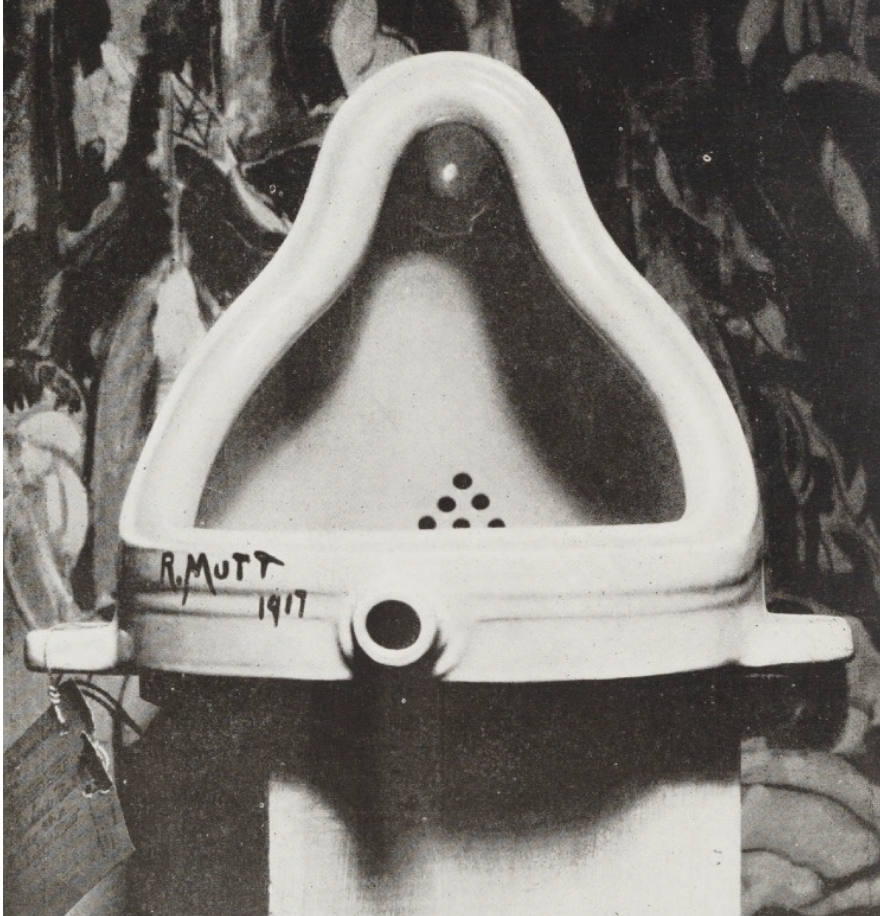Design History-Canon of Industrial Design as Art
1/13
There's no tags or description
Looks like no tags are added yet.
Name | Mastery | Learn | Test | Matching | Spaced |
|---|
No study sessions yet.
14 Terms
Avant Garde
A movement in art and design characterized by innovative and experimental ideas, often challenging traditional norms and conventions.

What are Rosalind Krauss main arguments?
Rosalind Krauss argues that originality is a modernist myth, art is shaped by repetition appropriation and existing cultural structures.
Artists like Duchamp and Picasso embraced industrial and found objects to challenge the idea of the “solitary genius”.She also examines how art reflects its cultural context and emphasizes the importance of interdisciplinary practices.

Marchel Duchamps Fountain (1917)
A readymade sculpture that challenged traditional art values by presenting a urinal as art, emphasizing the role of context and concept in art. In this piece, Duchamp raises the question of what should be defined as art, can an ordinary art piece be defined as an elevated art piece? He took it to the Society of Independent artists that rejected it as art. But what really defines art, is “originality” really the factor that makes art unique.
What is so special about what Michael Duchamp did?
He basically brought an ordinary object back to life, creating something different and he found that art is a SYSTEM OF SIGNS AND SELECTION, not “originality” as we originally see it.
What are some other examples, like collage?
Other examples include assemblage, photomontage, and mixed media, where artists combine various materials and techniques to challenge traditional notions of art.
How does Picasso’s printed chair-caning pattern relate to this idea of originality and Krauss?
Picasso’s printed chair-caning pattern exemplifies the idea of originality by incorporating everyday materials and techniques, questioning the boundaries of art. It aligns with Krauss's concept of art as a system that transcends singular uniqueness, emphasizing the value of context and interpretation. Like the grid, collage negates uniqueness, turning existing elements into a whole new narrative.
What about assemblage
Process Over Originality – Rejecting fixed authorship, Merzbau embraced process, chance, and impermanence, making transformation central to the work’s meaning. Like Kurt Schwitters art which is a living collage, Merzbau was an evolving, room-sized installation made of found objects and architectural elements, blurring the line between art and space.
what about surrealism and material disruption
Oppenheim’s fur teacup, this idea of surrealism disrupts what an original teacupt or regular still object is supposed to look like, disorienting expectations of material and function, linking it to dreams and the unconscious and also design as something more poetic and less literal, or practical
How do Krauss’s theories critique traditional ideas of authorship in art and design?
Krauss's theories critique traditional ideas of authorship by advocating for a broader understanding of artistic creation, emphasizing that meaning is derived from context rather than individual genius. This perspective challenges the notion of fixed ownership, suggesting that art functions within a system of relationships and is shaped by cultural narratives, NOT simply by originality. Through Krauss, we come to understand that although an art piece may be seemingly the same, the context or frame in which it stands completely changes what it represents.
In what ways did avant-garde movements blur the boundaries between art, design, and life
Avant-garde movements such as Dada and Surrealism blurred the boundaries between art, design, and life by integrating everyday objects into artistic expression and challenging conventional perceptions of aesthetics. This integration encouraged a deeper engagement with the viewer's experience and the role of art in daily living, emphasizing experimentation and the relationship between the artist, the artwork, and the audience.
How can we apply these themes to contemporary design practices?
Design is increasingly collaborative and iterative, not the result of a single “genius.”
Platforms like GitHub, Figma Community, or Thingiverse share designs freely for reuse and remix.
Generative AI tools (e.g., DALL·E, Midjourney, ChatGPT) blur the lines between human and machine authorship—echoing Krauss’s idea that originality is a myth.
Designers now repurpose waste materials (plastics, textiles, e-waste) into furniture, fashion, or art.
This connects directly to Schwitters’ Merzbau—where discarded materials become central to creativity.
Sustainability and anti-consumerism are key values, reflecting avant-garde critiques of mass production.
Should the design canon focus on individual designers or collective production?
The traditional design canon has long prioritized individual "genius" designers, but this perspective is increasingly outdated. Much like Rosalind Krauss critiqued the myth of originality in art, modern design acknowledges that creation often arises from networks of collaboration—whether among teams, cultures, or open-source communities. In architecture, for example, a project involves engineers, builders, and clients—not just a "star" architect. Similarly, platforms like GitHub and Figma emphasize shared authorship and collective iteration. Shifting the canon toward collective production would better reflect the realities of how design happens, and create space for recognizing marginalized contributors—such as craftspeople, anonymous designers, and co-creators in indigenous or community-based practices. The canon should evolve from glorifying the individual to acknowledging systems, processes, and participation.
Does originality matter, or is everything a repetition of past ideas?
As Rosalind Krauss puts it, originality is a constructed myth by modernism. Most design today functions through processes of remixing, iterating, and referencing past ideas. Whether in fashion trends or UI design, innovation often stems from adaptation rather than invention. That doesn’t mean originality is meaningless—it’s just redefined. Instead of seeing originality as creating something entirely new, we can see it as creating new contexts or meanings through reinterpretation. Duchamp’s Fountain was not an original object but was original in concept. Similarly, generative AI designs based on existing data challenge what “new” means. So, originality may still matter—but more as a reframing than a total rupture with the past.